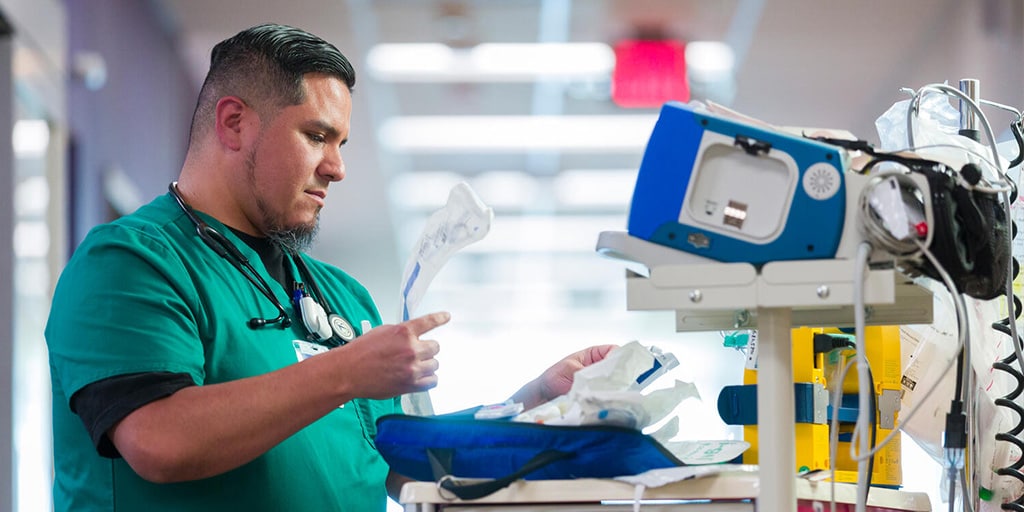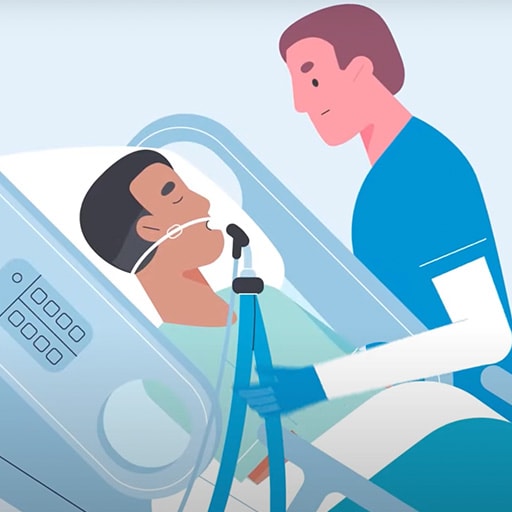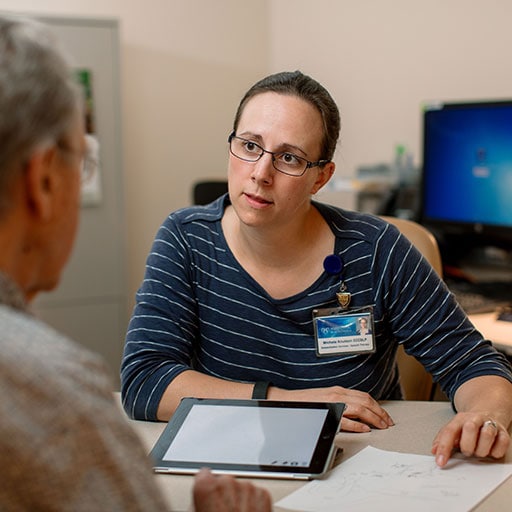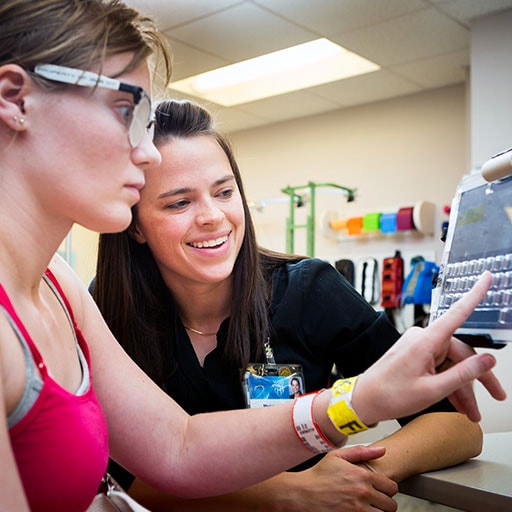
What does a respiratory therapist do?
A respiratory therapist helps patients who are having trouble breathing. Respiratory therapists work under the direction of doctors and treat a range of patients, from premature infants whose lungs are not fully developed to elderly people with lung disease. They give patients oxygen, manage ventilators, and administer drugs to the lungs.

1:33
Video: Behind the Scenes: Respiratory Therapists
Scope of practice
Respiratory therapists work with doctors and nurses to treat patients of all ages, from infants to the elderly. In a typical day, respiratory therapists may:
- Assist with diagnosing lung or breathing disorders
- Evaluate patients and perform tests and studies
- Determine appropriate therapy and treatment options with physicians
- Analyze blood and sputum in the lab
- Manage equipment and devices needed to help people who can’t breathe normally on their own
- Educate patients and families about lung diseases and breathing disorders
Specializations
There are many different areas that respiratory therapists can specialize in. Some areas require extra certification or experience. Respiratory therapists can specialize in:
- Neonatal or pediatric
- Geriatric
- Pulmonary rehab
- Polysomnography
- Critical care
- Home care
- Pulmonary diagnostics
Work environment
Respiratory therapists work in hospitals, cardiopulmonary diagnostic labs, cardiopulmonary rehabilitation centers, nursing homes, and home health agencies; however, about 75% of respiratory therapists are employed by hospitals. They typically work 35-40 hour weeks. Depending on where they work, they may work nights, weekends, and holidays, especially if they do direct patient care in hospitals or nursing homes. Shifts can be long, and respiratory therapists typically spend most of their shift on their feet.
Becoming a respiratory therapist
Individuals interested in becoming a respiratory therapist, should be detail oriented and well organized. It’s important to have strong problem solving and interpersonal skills, and the ability to work well under pressure. High school students can prepare for the role by taking advantage of science, math, and health courses.
Higher education requirements
Respiratory therapists can choose to get a two-year associate degree or a bachelor’s degree in respiratory therapy; some employers do prefer a bachelor’s degree. Some programs may have entrance requirements that include documented volunteer or work experience in an environment with respiratory care, so it may be beneficial to work or volunteer in a hospital or vent center in high school.
Certification process
After completing a respiratory therapy degree program, you must take the certification exam to become a certified respiratory therapist or a registered respiratory therapist. Every state (except Alaska) requires that respiratory therapists also obtain a state license. Additional certification is available to work with certain populations, such as pediatrics. Basic Life Support and Advanced Cardiac Life Support certifications are also highly recommended.
Respiratory therapists are required to renew their credentials every five years, which includes continuing education or retesting.
Career opportunities and outlook
Respiratory therapists can expect a median annual salary of $61,830.
Job opportunities are expected to be very good for respiratory therapists. The Bureau of Labor Statistics expects employment of respiratory therapists to grow much faster than average. Respiratory therapists are in demand to care for the large aging population. Older people are more likely to experience lung and heart conditions that may benefit from respiratory therapy.
With additional training and experience, some therapists may advance to staff therapist or administrative positions. Others start their own respiratory care companies or move into equipment marketing and sales.
By the numbers
median annual salary
years of higher education
job growth projected from 2020-2030
Respiratory therapist programs at Mayo Clinic
- Respiratory Care Clinical Rotation (Arizona)
- Respiratory Care Clinical Rotation (Florida)
- Respiratory Care Program (Minnesota)
Browse similar careers

Medical speech-language pathologist

Nurse
